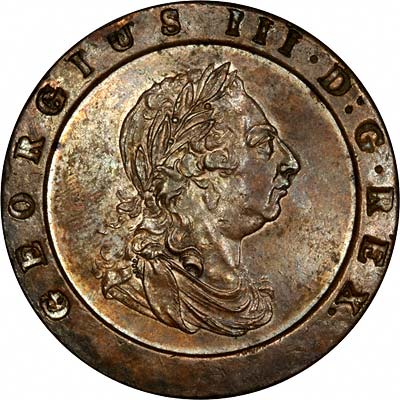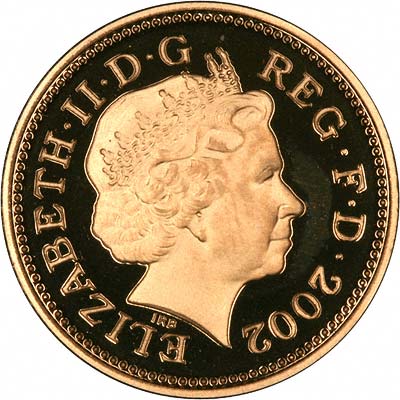| The Very Highest Quality Twopence... |
| British Twopences |
|

|
|
|

|
|
|

|
1660 Charles II
The first twopence was a silver coin issued for Charles II in about 1660, but was undated, as used to be the normal practice. This was a hammered coin, and there were three slightly different issues of twopence between 1660 and 1662. From 1668 onwards, milled (machine made) twopences were issued almost every year. Charles II's was the reign when the production of hammered coinage finished, and was replaced completely by milled issues, although machine production had started during the reign of Elizabeth I. The design of the first twopences was a shield superimposed on a cross, with a mark of value shown by the Roman II at the side of the king's head. The design on the milled twopences was a pair of interlinked letter C's.
Milled pennies, threepences and fourpences were also produced with designs similar to those of the twopence, differing only in their size and the mark of value.
James II
Production of silver twopences continued through the reign of James II, but the indication of value was changed to the Roman numerals II surmounted by a crown.
William and Mary Though to George III
For the reigns of William and Mary, William III, Anne, George I, George II, and the first part of George III's reign, silver twopences continued to be issued regularly, but the design of the reverse of the coin was changed to a crowned numeral 2.
George III
The production of silver twopences during most of George III's reign was rather erratic, as for most of the smaller denomination of coins. By 1797, Matthew Boulton had obtained a contract to produce large, heavy copper twopences, which are an outstanding and memorable example of coinage produced by improved methods. Copper twopences, though were only issued for the one date 1797, and silver twopences, after a break in production from 1800 to 1816 inclusive, continued to be issued regularly from 1817 onwards. From the introduction of regular issues of small copper denominations, the use of silver twopences for circulation appears to have steadily declined, and modern day issues are produced only for use at the Royal Maundy ceremony, with some issues also for collectors.
Boulton and Watt's Steam Power
Matthew Boulton and James Watt together had a great effect on the British coinage. Matthew Boulton was one of the greatest industrialists of his time. James Watt is familiar to every student as the inventor of the steam engine. In about 1772, Matthew Boulton turned his attention to the problems of the coinage, particularly that copper coins were being counterfeited. He applied his engineering success to ways of producing coins efficiently using steam power. By producing them efficiently, and incorporating design features difficult to copy, they could posses a high intrinsic value, which would deter counterfeiting by making it unprofitable. He proposed using a retaining collar to ensure a constant diameter, and using incuse lettering on a broad rim, which would protect the design from wear, and also be deter counterfeiting because of the heavy equipment need to strike the coins.
He received no response from the Royal Mint, but proceeded to build several coining presses. In 1786, he won a 100 ton order for copper coins from the East India Company.
In 1787, a government committee was formed to consider the state of the coinage, and Boulton was invited to attend in January 1788. As a result he was asked to produce patterns for halfpennies, which he offered to produce at about half the cost of the previous Royal Mint issue. Several designs appear to have met with approval, but none were coined for circulation, probably because of intransigence by the Royal Mint, who were reluctant to admit their incompetence, and the inadequacy of their machinery.
Cartwheels
Despite this, Boulton was confident in the superiority of his equipment, and continued to build more coining presses at his Soho Works in Birmingham.
Eventually in 1797, Boulton was given a contract to supply 20 tons of twopences and 480 tons of pennies. These were the famous "cartwheel twopences" and "cartwheel pennies" of 1797. These magnificent and impressive coins weighed two ounces and one ounce respectively! A further order for the same quantities was received the next year. Unfortunately for collectors, these were issued with the same, 1797, date as the first issue.
This was the first time Britannia had appeared on pennies or twopences. These were also the first copper penny and twopence to be issued.
Cartwheel twopences remain the largest and heaviest British coins ever issued, unless we include the emergency money issued locally under Charles I, which included silver half-pounds, weighing almost two ounces, and silver pounds weighing almost four ounces.
You may like to visit our page about Britannia on British Coins.
Modern Times and Maundy Money
We cannot find any hard information about when silver twopences ceased to circulate regularly, but it appears to have coincided with the regular issue of copper pennies, halfpennies and farthings, therefore from about 1797 onwards. This can be inferred by looking at the incidence of worn silver twopences, before 1800, a large proportion of twopences can be found in circulated condition, whereas after 1800 the proportion of circulated twopences drops significantly. During this time, silver threepences continued to be produced in large quantities, and they could still be found in circulation until the 1940's or slightly later. From this it would appear that most of the silver twopences produced after 1800, together with pennies and fourpences, were issued as Maundy coins. Maundy coins are still produced each year, and this includes silver twopences.
Decimal Twopences
In 1971, the decimal twopence or two pence became legal tender, although it had been available for some time before as part of a five coin familiarisation pack issued in a blue wallet. At first, all the new decimal coins carried the inscription "xxx new pence" or "new penny", to distinguish the new decimal pennies from the old pre-decimal pennies. From 1982 onwards, eleven years after decimalisation, the word "new" was dropped as it was no longer needed. Interestingly an error occurred at the Royal Mint in 1983, as a small number of twopences was issued with the inscription "new pence" instead of "two pence". These error coins are rare, and catalogued at £250 (dealers selling price) in 2003.
You may wish to look at our rare error twopence rumour page.
Special Collectors' Editions
In 2000, to celebrate the millennium, a thirteen coin British silver set was issued containing all the circulating coins in issue plus the four Maundy coins
In 2002 to celebrate the Queen's Golden Jubilee, a similar set was issued in gold.
Again in 2006, for the Queen's 80th birthday, another 13 coin silver proof set was issued.
The Future
It would surprise most people to learn that silver twopences are still produced and issued each year. We wonder what will happen to Maundy coins including twopences if and when Britain joins the euro. It is likely that the UK will be allowed to continue to produce special commemorative coins using the old denominations, or will the Queen hand out euro coins?
If you want to find the value of a coin you own, please take a look at our page I've Found An Old Coin, What's It Worth?
There are more answers to be found on our Frequently Asked Coin Questions page.
If you have an enquiry about any of our twopences we'd be happy to try to answer you.
| ...at the Lowest Possible Price |
|
32 - 36 Harrowside, Blackpool, Lancashire, FY4 1RJ, England. Telephone (44) - (0) 1253 - 343081 ; Fax 408058; E-mail: The URL for our main page is: https://24carat.co.uk | Chard(1964) Ltd |